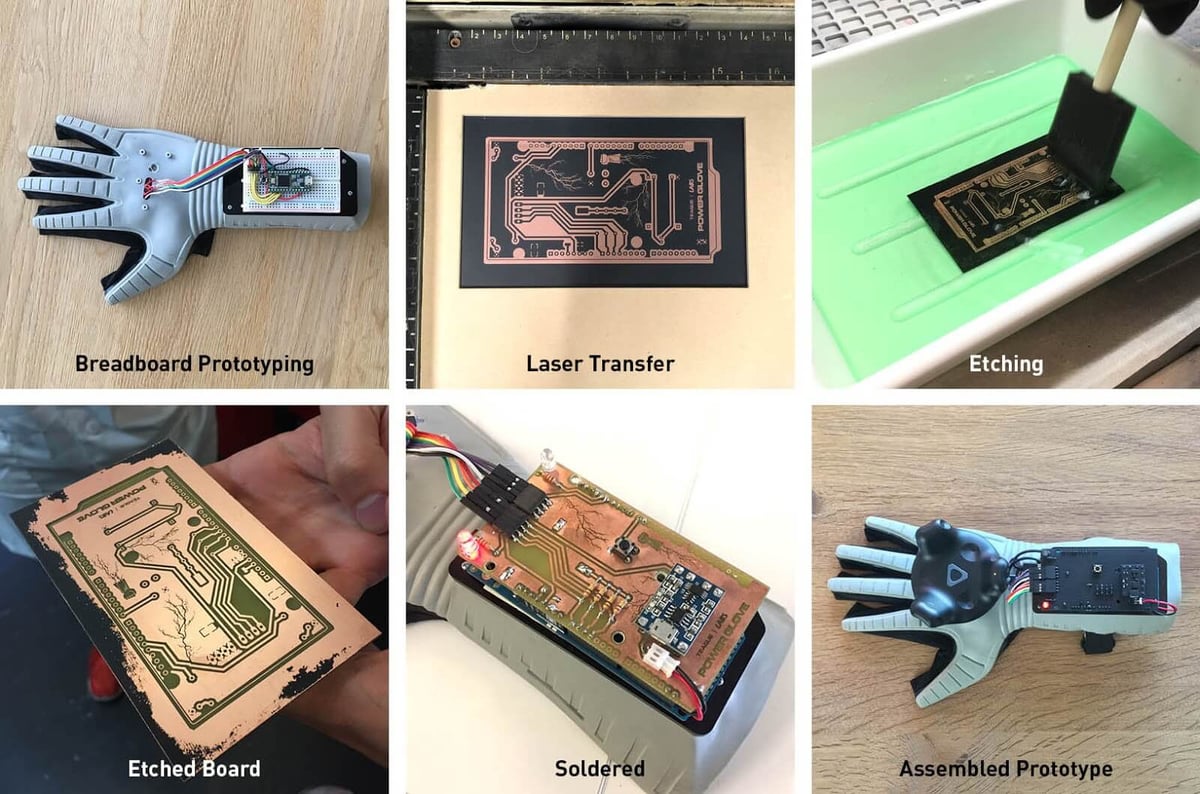Ancient piece of video game trivia is given a 21st century makeover; say hello to the Power Glove VR, upgraded with Arduino and 3D printing.
Today, everyone sings the praises of the Nintendo Switch. Yesterday, there was the Nintendo Power Glove. The compliments were not so effusive.
The Nintendo peripheral was first launched in 1989, and the pitch was that you could control games with the motion of your hands. It has a prominent — and toe-curlingly awful — appearance in the video game movie The Wizard.
Alas, the Power Glove was a commercial failure. It was clunky, poorly designed, and the supporting games library was pathetic. Buh-bye, Power Glove!
Fast forward nearly 30 years, and a different set of wizards have resurrected this neglected item of video game history. The gang at Teague Labs have designed a Nintendo Power Glove that works perfectly as a virtual reality controller.
How did they do it? It so happens that the peripherals are pretty easy to source on the secondhand market. They disassembled the glove, scanned the components, then 3D printed modified plastic parts so they could attach an Arduino Due and a Vive Tracker.
Next they added a custom shield and interfaced it with the tracker to make the Power Glove fully compatible with the HTC Vive VR system.

Power Glove VR isn’t Child’s Play
The augmented Power Glove has key advantage over a more conventional controller; the interaction feels more natural.
“Holding virtual objects, touching mock-up screens, and pointing at things just feels a lot better when using the dexterity of one’s fingers instead of trying to use a fixed wand,” the team explained on their site.
It also had better results than the Vive controller for on-screen touch interactions. “With the Power Glove and a second tracker mounted to the backside of an acrylic iPad, we were able to simulate more natural interactions with an iPad in VR,” they explain.
“Holding virtual objects, touching mock-up screens, and pointing at things just feels a lot better when using the dexterity of one’s fingers instead of trying to use a fixed wand.”
“The overall experience improves dramatically when using the glove. The acrylic iPad even provides the same haptic feedback as a tablet would.”
As a proof-of-concept application Teague created for the Glove, you can shoot lightning by making a fist. They also developed a prototype game of Rock, Paper, Scissors where you have to make the right gesture to win.
They say that “the game is still in an early stage, but it’s already a lot of fun to play!”
Interested in building a Power Glove VR of your very own? Visit the Teague Labs site for the full story. Plus, all of their files are available for download from their GitHub repository.

License: The text of "Power Glove Reinvented for VR with Arduino and 3D Printing" by All3DP is licensed under a Creative Commons Attribution 4.0 International License.